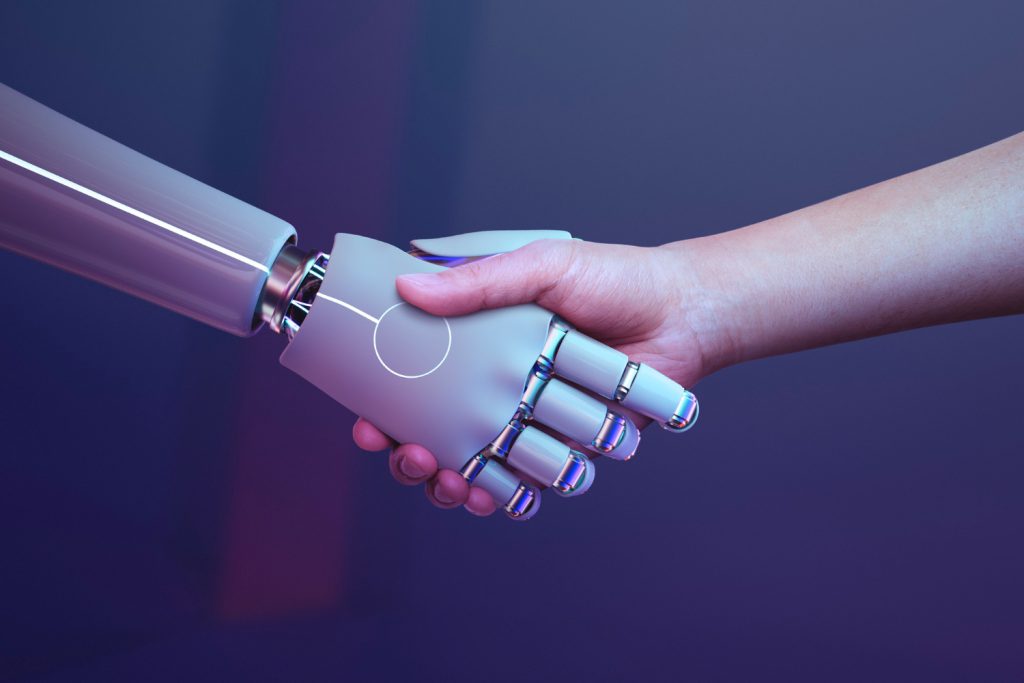Image by rawpixel.com on Freepik
Artificial intelligence (AI) is rapidly changing how we work and live, and it is becoming more and more important in practically every sector of the economy. Routine chores are automated, decision-making is aided, and productivity is increased thanks to it. We’ll look at how AI is facilitating human labor in this blog article, as well as the possible advantages and drawbacks of this technology in the workplace.
In this article, we will go over the following subjects:
- How artificial intelligence (AI) is being applied in several sectors, including manufacturing, banking, healthcare, customer service, and transportation
- Improved decision-making, cost savings, and better efficiency are some of the advantages of AI in the workplace.
- The possible drawbacks of AI in the workplace include the necessity for retraining and reskilling, job displacement and unemployment, ethical difficulties, and privacy concerns.
- A discussion of probable advances and how AI could affect the workforce.
This blog article seeks to give readers an overview of the present status of artificial intelligence in the workplace, as well as some insight into how this technology is transforming the way we work and its potential future effects.
How AI is being used in different industries
Automation in manufacturing and assembly line work
Because they include repetitive operations that are simple for machines to repeat, manufacturing and assembly line jobs have traditionally been excellent candidates for automation. Today, many workplaces utilize AI-powered robots and automation systems to carry out activities like welding, painting, and assembly. In addition to working quicker and more correctly than people, these machines don’t require breaks or extra compensation. In many industrial industries, this has resulted in enhanced efficiency, decreased prices, and improved product quality.
AI-assisted decision-making in finance and healthcare
AI is also being utilized to support decision-making in the healthcare and financial sectors. In order to forecast future market movements, AI-powered systems are being used in finance to analyze vast amounts of data, including stock market trends and financial reports. AI is being used in the healthcare industry to help doctors and nurses with patient monitoring, treatment planning, and diagnostics. A patient’s X-rays and medical history are just two examples of the types of data that AI-powered systems can quickly analyze to find trends and predict a patient’s health.
AI-powered customer service and virtual assistants
Virtual assistants and chatbots powered by AI are becoming more prevalent in customer service. Without the assistance of a human, these systems can handle customer inquiries, troubleshoot issues, and provide information. This has the potential to lower costs for businesses while increasing customer satisfaction.
Use of AI in transportation and logistics
Routes are being optimized, fuel consumption is being decreased, and safety is being improved in logistics and transportation using AI. The way that goods are transported may change as a result of the development and testing of self-driving trucks and delivery drones. AI-powered logistics systems can also be used to enhance warehouse productivity and inventory management.
In general, AI is being applied across numerous industries to automate tasks, support decision-making, and boost effectiveness and productivity. We can anticipate seeing more and more AI applications as technology develops in various industries.
The benefits of AI in the workplace
Increased efficiency and productivity
An apparent advantage of AI in the workplace is enhanced productivity and efficiency. AI technologies can free up human workers to concentrate on more difficult and creative activities by automating repetitive jobs. This may result in higher production and quicker project completion. Further boosting productivity, AI-powered systems can operate nonstop without the need for rest periods or extra compensation.
Cost savings for businesses
Savings for businesses are another advantage of AI in the workplace. Businesses can cut labor costs and boost productivity by automating tasks, which can result in higher profits. Additionally, since AI-powered systems are less likely to make mistakes than human workers, they can lower the costs associated with errors.
Improved accuracy and decision-making
Additionally, AI systems can enhance decision-making and accuracy. AI systems can find patterns and predict outcomes that humans might not be able to see by analyzing vast amounts of data. For businesses and their clients, this can result in better decision-making and better outcomes.
Enhanced customer service and satisfaction
AI-driven customer support Virtual assistants and chatbots can also boost client happiness and customer service. Without the assistance of a human, these technologies can answer consumer questions, fix issues, and offer information. Customer concerns may be resolved more quickly as a result, increasing customer satisfaction.
Overall, AI may have a positive impact on the workplace through greater accuracy and decision-making, cost savings, higher productivity, efficiency, and customer happiness. These advantages will most likely become more obvious as technology develops.
The potential downsides of AI in the workplace
Job displacement and unemployment
The possibility of job loss and unemployment is one of the major drawbacks of AI in the workplace. Some occupations that were formerly done by humans may become obsolete as AI systems automate more and more operations. For the impacted workers, this may result in unemployment and economic disruption. Although AI and automation may lead to the creation of new employment, it is unclear whether these positions will be enough to offset the ones that are lost.
Ethical considerations and privacy concerns
Aside from privacy issues, the employment of AI in the workplace also presents ethical questions. For instance, AI systems may decide on things like employment or medical diagnosis that have a big influence on people’s lives. It is important to make sure that these systems are created ethically, transparently, and with the necessary monitoring and regulation. Additionally, given that AI systems are frequently used to handle substantial volumes of personal data, the usage of AI in the workplace may give rise to issues regarding data privacy.
The need for re-skilling and retraining workers
The requirement for reskilling and retraining employees is another possible drawback of AI in the workplace. Some people may discover that their existing abilities are no longer in demand as AI systems automate an increasing number of operations. To remain competitive in the employment market, they might need to pick up new skills as a result of this. Governments and businesses will need to spend money on training initiatives to assist people in adjusting to the shifting labor environment.
The possibility of AI-powered bias and discrimination
The biases existing in the data that AI systems are educated on can be sustained and even amplified. This may result in AI-powered prejudice, especially if the training data was skewed. It’s crucial that AI systems are developed and put into use in a way that reduces the possibility of prejudice and discrimination. Using several data sets, checking for bias, and including ethical issues in the design process are a few examples of how to do this.
Overall, there are numerous advantages to using AI in the workplace, but there are also possible drawbacks including job displacement, ethical issues, the necessity for retraining, and the potential for bias and discrimination fueled by AI. In order to lessen the detrimental effects of AI on labor and society, it is essential to take these drawbacks into account.
Summary of main points
In this blog article, we covered the applications of AI in several fields as well as the advantages it may have at work, like better productivity, cost savings, decision-making that is more accurate, and improved customer service. We also looked at the possible drawbacks of AI in the workplace, such as job loss and unemployment, ethical issues and privacy worries, the requirement for people to reskill and retrain, and the potential for bias and discrimination fueled by AI.
Discussion of future developments and the potential impact of AI on the workforce
We may anticipate seeing a much more broad application of AI in the workplace as AI technology develops. Benefits and drawbacks are likely to result from this, and it will be important to keep an eye on them and deal with them as they appear. It’s also critical to think about how AI will affect the labor market over the long term and to take precautions to make sure that employees can adjust to a changing labor market and develop the skills they need to be successful in the future.
Call to action for readers to consider the implications of AI in their own workplaces and industries
It’s critical for companies, employees, and legislators to think through the implications of this technology for their respective workplaces and sectors as the use of AI in the workplace increases. This can entail funding worker training initiatives, establishing moral standards for the application of AI, and adopting measures to address possible drawbacks like job loss and privacy worries. We can make sure that the advantages of AI are maximized and the drawbacks are reduced by anticipating these problems.





